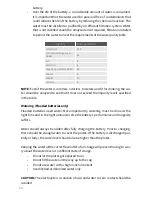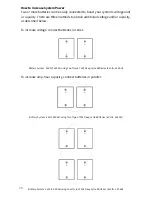
battery.
•
Over the life of the battery, a considerable amount of water is consumed.
It is important that the water used be pure and free of contaminants that
could reduce the life of the battery by reducing the chemical reaction. The
water must be distilled or purified by an efficient filtration system. Water
that is not distilled should be analyzed and if required, filtration installed
to permit the water to meet the requirements of the water purity table.
NOTE:
Even if the water is colorless, odorless, tasteless and fit for drinking, the wa-
ter should be analyzed to see that it does not exceed the impurity levels specified
in the table.
Watering (Flooded batteries only)
Flooded batteries need water. More importantly, watering must be done at the
right time and in the right amount or else the battery's performance and longevity
suffers.
Water should always be added after fully charging the battery. Prior to charging,
there should be enough water to cover the plates. If the battery is discharged (par-
tially or fully), the water level should also be higher than the plates.
Keeping the water at the correct level after a full charge will prevent having to wor-
ry about the water level at a different state of charge.
•
Do not let the plates get exposed to air.
•
Do not fill the water all the way up to the cap.
•
Do not use water with a high mineral content.
•
Use distilled or deionized water only.
CAUTION:
The electrolyte is a solution of acid and water so skin contact should be
avoided.
24
Impurity
Parts per Million
Total Solids
100
Calcium and Magnesium
Oxides
40
Iron
5
Ammonia
8
Organic and Volatile Matter
50
Nitrites
5
Nitrates
10
Chloride
5
Содержание BN72-08-AC-Autodrive-M
Страница 34: ...34 6 Electrical Diagrams...
Страница 35: ...35...













































